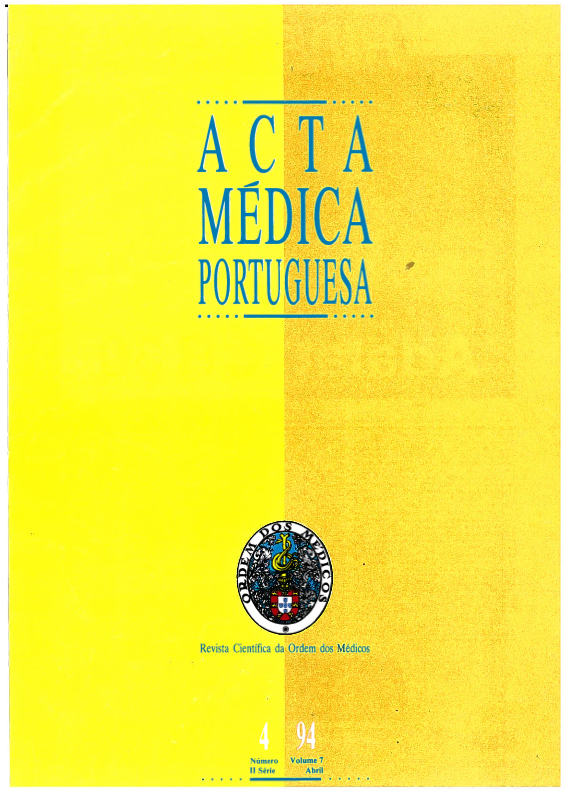Diagnóstico ecográfico da patologia da coifa dos rotadores e da bolsa subacromial: critérios.
DOI:
https://doi.org/10.20344/amp.2890Resumo
Shoulder soft tissues echographic evaluation depends on the availability of well established echographic diagnostic criteria, which hasn't been fully accepted until nowadays, as results in that field have been controversial. The main purpose of the present study has been to determine the echographic criteria of the most frequent shoulder periarticular soft tissue pathology. A prospective study has been carried out, comparing the right to the left shoulder of 37 normals in order to determine the normal characteristics and limits of the selected echographic parameters (echogenicity, echostructure, dimensions in terms of width, rhythm of movement and rotator cuff competence ratio). Afterwards, the relative role of these variables in the identification of three different nosological groups determined through suitable gold standard diagnostic methods (36 suprasinatus tears, 20 supraspinatus tendinitis and 22 subacromial bursitis) has been determined. Lastly, the discriminant power of some echographic parameters association was tested, thus suggesting the echographic criteria to be selected. Results support the following criteria: 1) supraspinatus tears: cuff competence ratio less than 1, the difference value between the affected and the sound tendon thickness less than -1,8 mm associated with asymmetries of one of the remaining parameters (echogenicity, echostructure or rhythm); 2) supraspinatus tendinitis: the difference between the affected and the sound tendon thickness bigger than 1 mm associated with asymmetries of one of the remaining parameters (echogenicity, echostructure or rhythm); cuff competence ratio equal or above 1;3) subacromial bursitis: the difference between the affected and the sound bursa thickness bigger than 1 mm associated with asymmetries of one of the following parametres: echogenicity, echostruture or rhythm.Downloads
Downloads
Como Citar
Edição
Secção
Licença
Todos os artigos publicados na AMP são de acesso aberto e cumprem os requisitos das agências de financiamento ou instituições académicas. Relativamente à utilização por terceiros a AMP rege-se pelos termos da licença Creative Commons ‘Atribuição – Uso Não-Comercial – (CC-BY-NC)’.
É da responsabilidade do autor obter permissão para reproduzir figuras, tabelas, etc., de outras publicações. Após a aceitação de um artigo, os autores serão convidados a preencher uma “Declaração de Responsabilidade Autoral e Partilha de Direitos de Autor “(http://www.actamedicaportuguesa.com/info/AMP-NormasPublicacao.pdf) e a “Declaração de Potenciais Conflitos de Interesse” (http://www.icmje.org/conflicts-of-interest) do ICMJE. Será enviado um e-mail ao autor correspondente, confirmando a receção do manuscrito.
Após a publicação, os autores ficam autorizados a disponibilizar os seus artigos em repositórios das suas instituições de origem, desde que mencionem sempre onde foram publicados e de acordo com a licença Creative Commons









